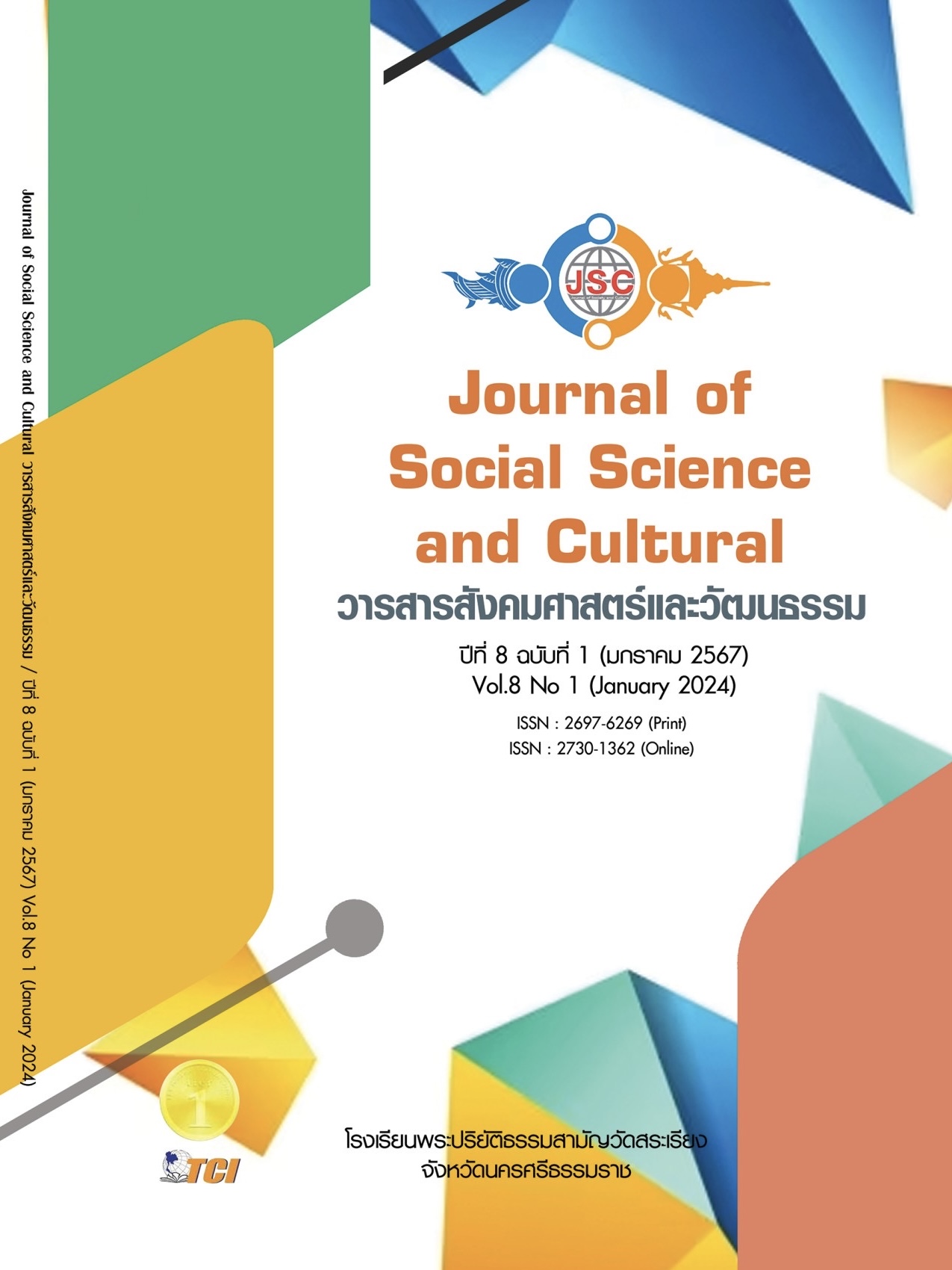COMMUNICATION MODEL THROUGH ORGANIZING SPECIAL ACTIVITIES OF THE ONE BELT ONE ROAD POLICY, A CASE STUDY OF XIANGYUNSHA SILK IN GUANGDONG, CHAINA
Main Article Content
Abstract
Objectives of study 1) To study the principles of organizing special events at Xiangyunsha Silk, Guangdong, China. As a tool for publicizing China's One Belt One Road policy. And 2) To study the process of organizing special events as a cross-cultural communication, meaning, importance, as well as the process of organizing the event. Special activities in view of China's One Belt One Road Policy strategy as cross-cultural communication. Using qualitative research methods to survey and study special activities, emphasizing data sources from document analysis. The results of the study found that The principle of organizing special events is to focus on dissemination. Culture goes hand in hand with economic development according to the goals of the development plan. One Belt One Road Policy through Xiangyunsha Silk Innovation, Guangdong. The process of organizing special activities is display and exhibitions, organized by the institutional organization for public relations results. The objective is to demonstrate progress. As well as the past work of One Belt One Road policy through the innovation of Xiangyunsha silk, Guangdong, for the public to see the display and exhibition of the interpretation of Xiangyunsha silk, Guangdong, namely cross-cultural communication. In every activity, there are applications to create the meaning of cooperation between China and countries in other regions along China's One Belt One Road policy, the New Silk Road. Taking the history of The ancient "Silk Road" is to promote the peaceful and active development of the participating countries' economies to build political mutual trust. economic integration and cultural integration according to One Belt One Road Policy.
Article Details
References
ชิตวร วราศิริพงศ์. (2559). วัฒนธรรมการค้าจีน: การศึกษาที่มาของแนวคิดและวิธีการปฏิบัติตนในการเจรจาธุรกิจกับชาวจีน. Journal of Language and Culture, 35(2), 141-162.
ประชาชาติธุรกิจ. (2566). Belt and Road (BRI) โครงการยุทธศาสตร์ที่จีนใช้ขยายอิทธิพลในเวทีโลก. เรียกใช้เมื่อ 18 ตุลาคม 2566 จาก https://today.line.me/th/v2/article/x2JRRl6
Dayoo. (2023). 顺德香云纱未符合传统定义,但守正创新行为应依法保护. Retrieved May 5, 2023, from https://news.dayoo.com/guangdong/202304/26/ 139996_54464625.htm
Miles, M. B. & Huberman, A. M. (1994). Qualitative Data Analysis: An Expanded Sourcebook. Thousand Oaks, CA: Sage Publications.
OECD. (2001). ANNUAL REPORT 2001. Retrieved June 30, 2021, from https://www.oecd-ilibrary.org/docserver/annrep-2001-en.pdf?expires=1698648443&id=id&accname=guest&c hecksum=AC2AC859A3AEE9465D8787BB14CF9E60
OECD. (2010). 2010 REPORT ON THE ATTRIBUTION OF PROFITS TO PERMANENT ESTABLISHMENTS. Retrieved June 30, 2021, from https://www.oecd.org/ctp/transfer-pricing/45689524.pdf
SCIO. (2014). 丝绸之路与中华文明的西传. Retrieved June 30, 2021, from http://www.scio. gov.cn/ztk/wh/slxy/31210/Document/1375698/1375698.htm
SUSTech Library. (2021). CNKI中国知网数据库. Retrieved June 30, 2021, from https://lib.sustech. edu.cn/2021/0601/c530a3593/page.htm
UNESCO & China National Silk Museum. (2022). Textiles and clothing along the Silk Roads. Retrieved May 12, 2022, from https://unesdoc.unesco.org/ark:/48223/pf0000382993.loca le=en
WTO. (2001). ANNUAL REPORT 2001. Retrieved June 30, 2021, from https://www.wto.org/english/ res_e/booksp_e/anrep_e/wto_anrep01_e.pdf
Zhong Guo Cheng Shang Wang. (2011). 10 years: China wins, the world wins. Retrieved June 30, 2021, from http://china.trade2cn.com/dataservice/economy/1108311341112E6.html


